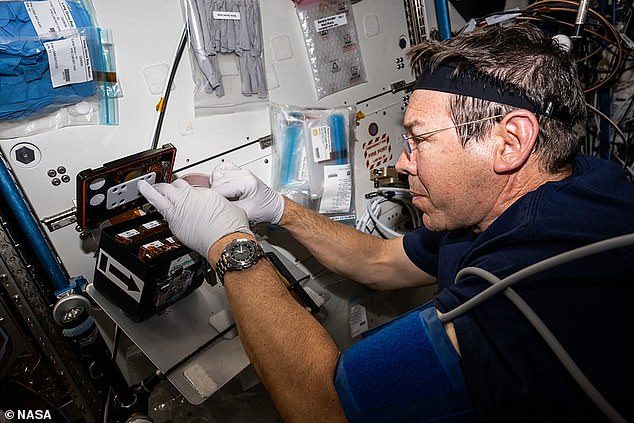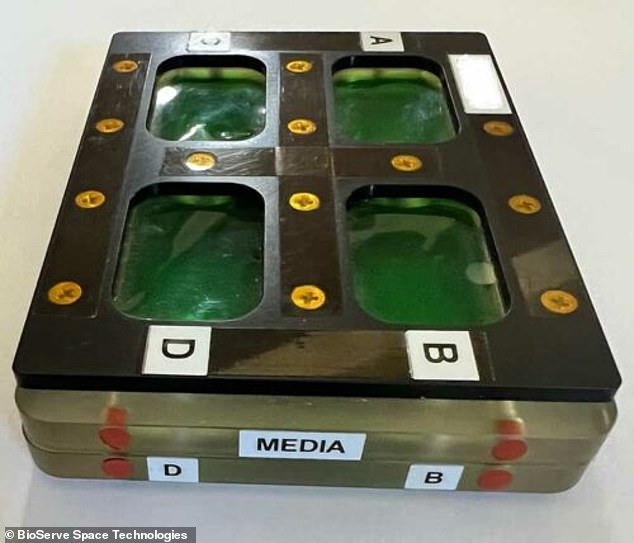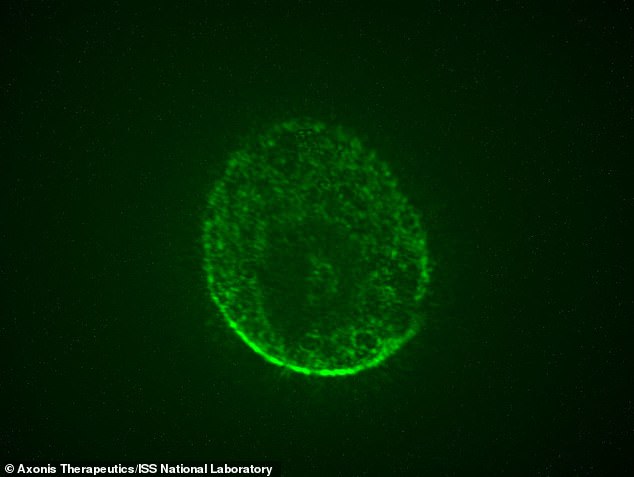Scientists have grown tiny human brains in space to research new treatments for Alzheimer’s, Parkinson’s and spinal cord injuries.
Low gravity on the International Space Station (ISS) allowed researchers to grow brain organoids in just 72 hours. This process can take months on Earth.
The organoids, artificially grown masses of cells that mimic the structure and function of a human organ, allowed researchers to test a new method for curing currently untreatable neurological diseases.
The promising new treatment, developed by biotechnology company Axonis Therapeutics, uses a reprogrammed virus to deliver beneficial gene therapy to central nervous system (CNS) cells.
Such modified viruses are called viral vectors and can be particularly useful in treating Alzheimer’s disease, Parkinson’s disease and spinal cord injury.
Nearly 600,000 Americans are diagnosed with Alzheimer’s or Parkinson’s disease each year, and approximately 18,000 new spinal cord injuries occur in the U.S. each year.
Tests showed that the company’s treatment worked in mice. But gene therapies that are effective in rodent models often fail in humans.
Axionis Therapeutics needed to conduct tests using an accurate model of the human central nervous system, which prompted them to grow human brain organoids in space.
Scientists on the International Space Station (ISS) have grown brain-like organoids in space to investigate new treatments for Alzheimer’s, Parkinson’s and spinal injuries
Scientists can grow CNS cells on Earth, but gravity forces them to arrange themselves into two-dimensional separate layers. making it difficult to grow the three-dimensional structure and complexity of functional groups in brain cells.
These space-grown organoids quickly provided a highly accurate model of the human brain, allowing ISS researchers to truly test the effectiveness of the new viral vector treatment.
“Doing research in space is not something you would normally think about,” said Shane Hegarty, co-founder and chief scientific officer of Axonis Therapeutics.
“But the ability to exploit microgravity conditions could unlock much untapped potential by pushing the boundaries of science in a unique environment,” he added. statement.
In August 2023, Axonis Therapeutics launched frozen vials containing their viral vector, mature neurons and astrocytes – or cells that hold nerve cells in place and help them develop – towards the ISS aboard a cargo resupply mission.
A team of researchers in the floating laboratory then injected these materials into a machine called BioCell, a specialized cell culture system.
They loaded the viral vector with a fluorescent protein gene. If it were to successfully infiltrate the neurons and implant the gene into them, they would glow neon green.
Within just 72 hours, the cells had not only organized into three-dimensional human brain organoids, but were also glowing.

NASA astronaut Mike Barratt processes brain organoid samples aboard the ISS for another research project being conducted this year

ISS researchers used a specialized cell culture system called BioCell to grow brain organelles and test the effectiveness of the viral vector
“The crucial day was when the crew did the microscopy and we saw large amounts of green, glowing 3D tissue,” says researcher Sheila Nielsen of BioServe Space Technologies, the research organization that founded BioCell.
“Shane and I sent images of the organoids back and forth to each other, and we were quite ecstatic because this was not something they had ever seen on the ground,” she added in the statement.
Viruses are very efficient at infecting cells and introducing genetic material into them.
This is how they make their hosts sick: the introduced genetic material damages cells and allows the virus to reproduce, triggering an immune response.
But scientists can reprogram viruses to deliver beneficial gene therapies to cells, providing targeted treatment for disease or injury.
This study showed that Axonis Therapeutics’ viral vector could deliver gene therapy to human neurons.
“It was very exciting: we were able to both validate the targeting ability of gene therapy and show that we were indeed rapidly forming 3D assembly models of the human brain,” Hegarty said.
‘The most important breakthrough is that you can quickly assemble adult neurons and astrocytes into a model of the brain in microgravity conditions, which is not possible on the ground.’


